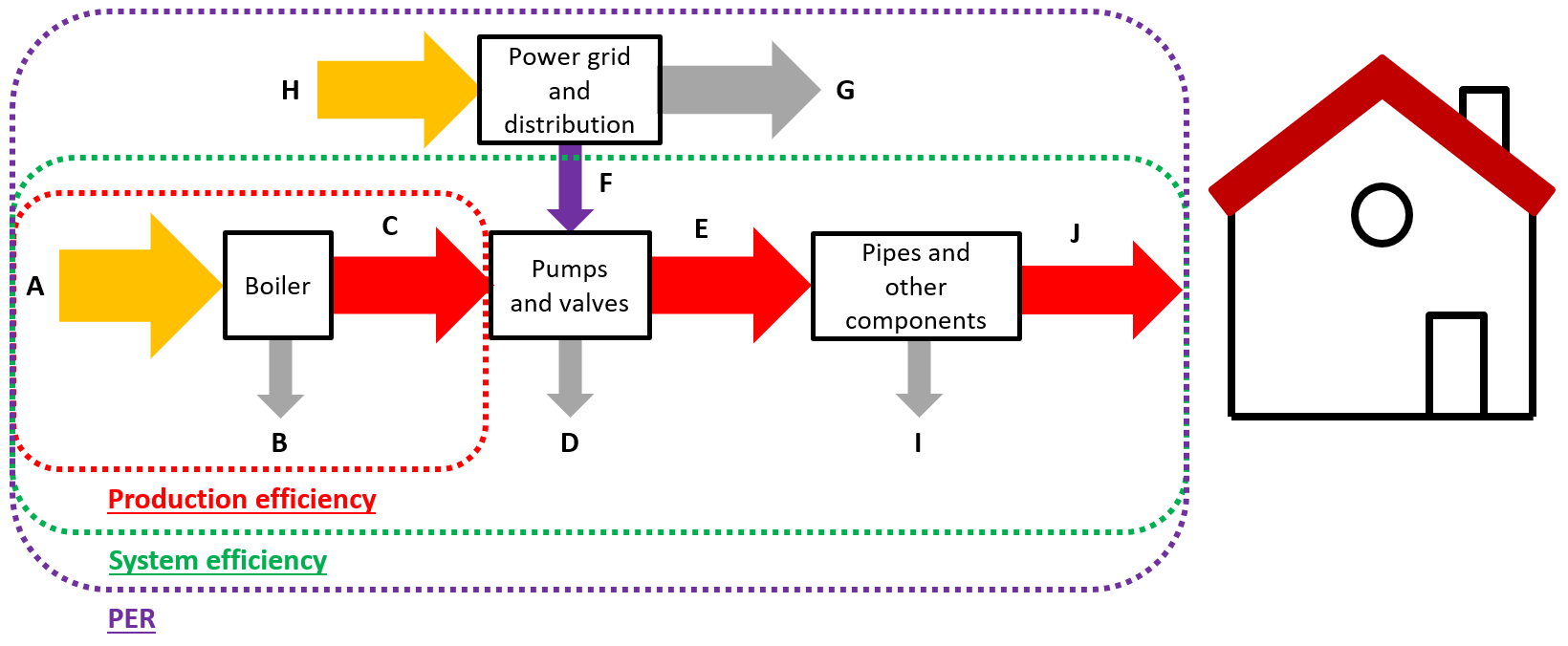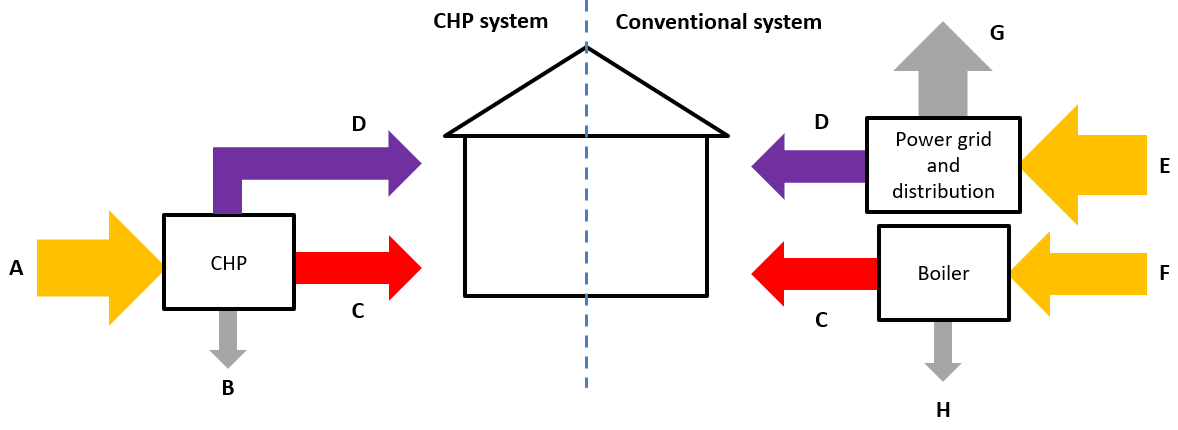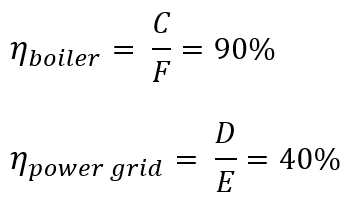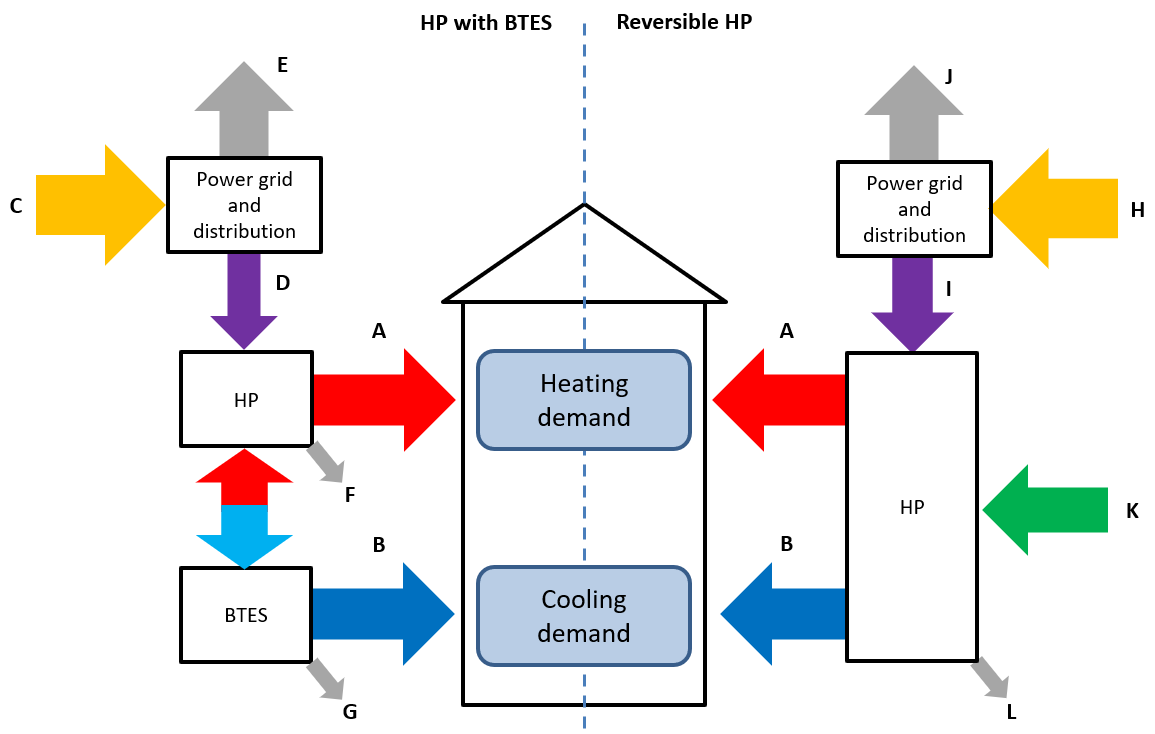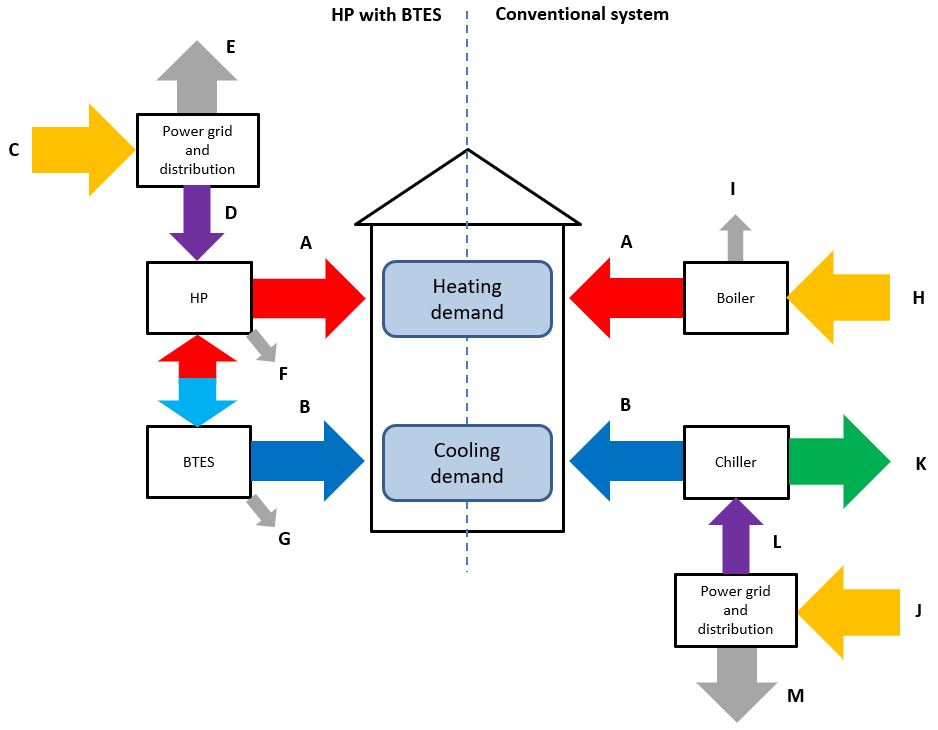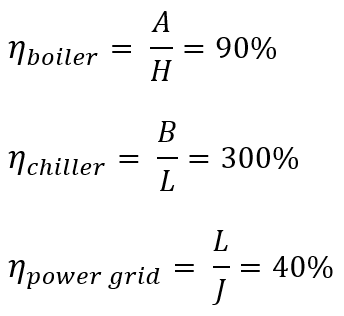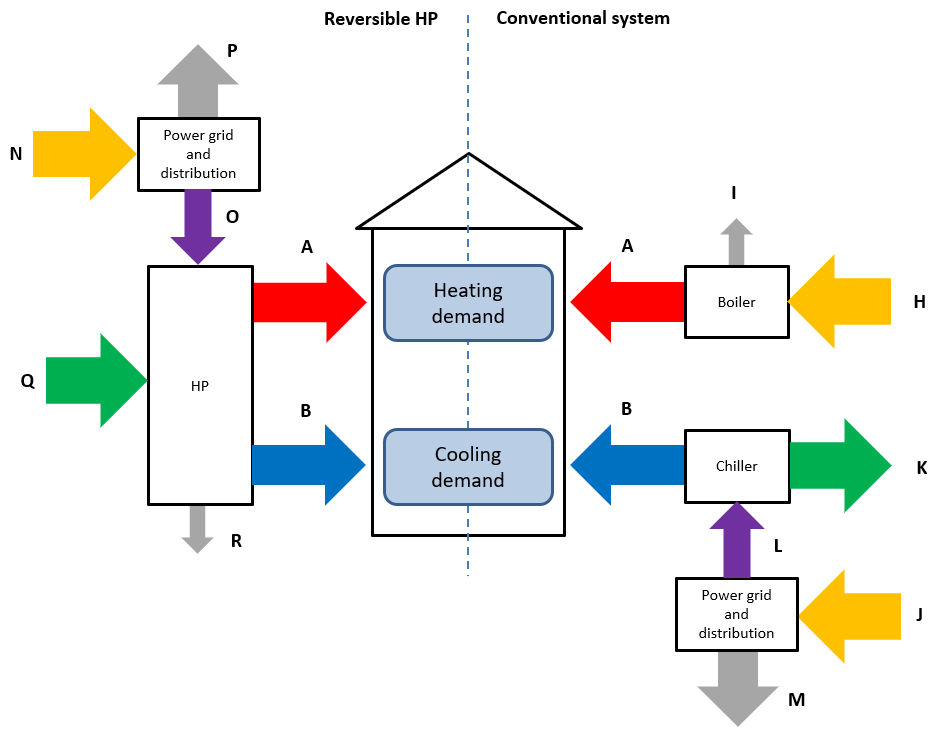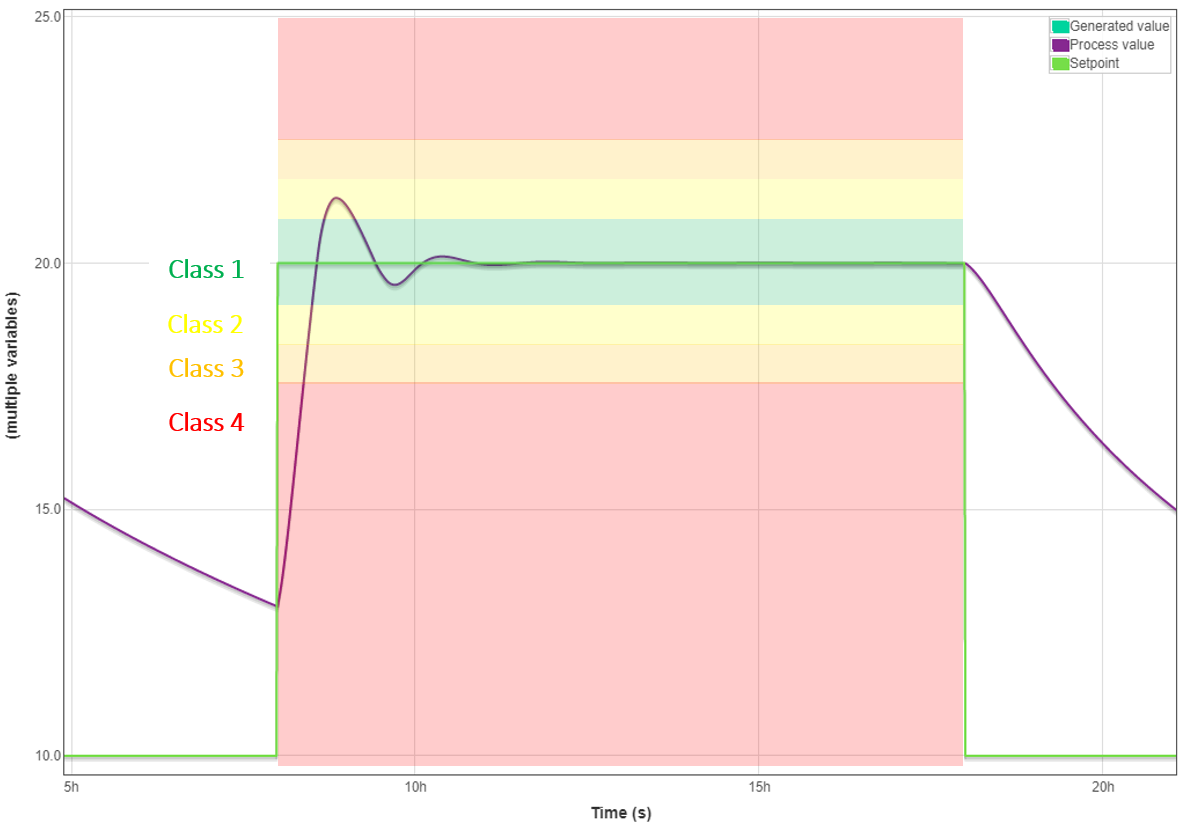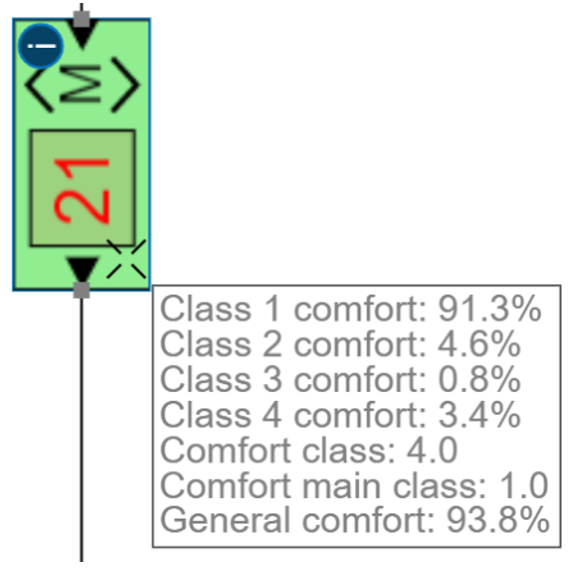The Pareto calculations are divided into the three sections “Energy”, “Comfort” and “Investment”.
Energy
In the “Energy” section the efficiencies are calculated. Any efficiency ratio always has the same principle for calculation. The efficiency is the useful outgoing energy or power divided by the ingoing energy or power. The production efficiency, system efficiency and PER (Primary Energy Ratio) are visualised in the figure below. The yellow arrows represent the primary energy, the red arrows the useful thermal energy, the purple arrow the electricity and the grey arrows the thermal losses.
The efficiencies are calculated as follows.
The RPES (Relative Primary Energy Savings) is typically used for CHPs (Combined Heat and Power), but can also be used for a complete system with other production units. The RPES is the percentage amount of primary energy savings compared to a fictional reference case. The calculation for a CHP system is as follows.
The useful thermal energy (C) and electricity (D) is the same for the CHP system as for the conventional system. The conventional system as the reference is typically a boiler delivering the thermal energy with a boiler efficiency of 90% and the power grid delivering the electricity with an efficiency of 40% (in Belgium). The RPES is calculated as follows.
The primary energies (E+F) can be calculated by using the conventional efficiencies for heating and electricity.
The PERs are in this case:
Previous examples are however simplistic. A more complex example is, for instance, an HP (Heat Pump) combined with a BTES (Borehole Thermal Energy Storage) system to deliver heating and cooling to a building, compared with a reversible HP which supplies heating and cooling. The heat demand of the first system is delivered by the heat pump, meanwhile extracting the heat from the BTES system (extracting heat is the same as injecting cold in the BTES system). The heat demand of the second system is delivered by the reversible HP. The cooling demand of the first system is delivered by the BTES system and of the second system, it's delivered by the reversible HP working as a chiller.
The system efficiency and PER are calculated as follows.
To calculate the RPES of both systems, it is compared to a conventional reference. First the HP with BTES.
The RPES is calculated as follows.
To calculate the primary energy flows (H and J), the efficiencies of the boiler (90%), the power grid (40%) and chiller (300% = 3 EER) are necessary.
The same comparison is done for the reversible HP.
The RPES is calculated as follows.
The same primary energy flows (H and J) are used in this calculation because the reference is the same.
Comfort
To quantify comfort, a class system is introduced. In the figure below, the room temperature is visualised as a purple line and the setpoint is visualised as a green line. The classes are visualised as coloured squares.
The difference between the configured setpoint and the actual temperature is monitored. The degree of temperature deviation is classified into the four classes. In this case, the high setpoint is 20°C, which means the limits of all the classes are:
Class 1 = [19,21]
Class 2 = [18,19] and [21,22]
Class 3 = [17,18] and [22,23]
Class 4 = [-infinite,17] and [23,infinite]
The limit temperatures always deviate 1°C based on the setpoint. If the user changes the setpoint, the limits change as well.
On every room controller, the amount of time in percentiles is given for every class, as well as the overall comfort class, the main comfort class and the general comfort. The overall comfort class is the worst class with a percentile of more than 1. The main comfort class is the class with the highest percentile. The general comfort means approximately 93.8% of all the people are satisfied with the temperature of the room.
The calculation of general comfort is based on the Fanger theory for comfort.
